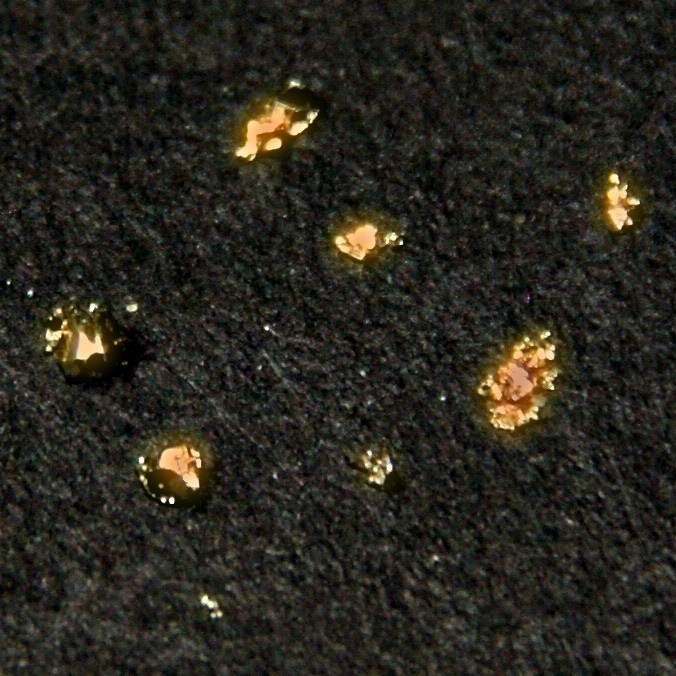Kalifornij
98
Cf
Skupina
n/p
Perioda
7
Blok
f
Protoni
Elektroni
Nevtroni
98
98
153
Splošne lastnosti
Vrstno število
98
Atomska teža
[251]
Masno število
251
Kategorija
Aktinoidi
Barva
n/p
Radioaktivno
Da
Named after California and the University of California
Kristalna struktura
Heksagonalna
Zgodovina
Californium was discovered by Stanley G. Thompson, Kenneth Street, Jr., Albert Ghiorso and Glenn T. Seaborg in 1950 at the University of California, Berkeley.
It was produced by the bombardment of curium with alpha particles.
Californium was isolated in macro quantities for the first time by Burris Cunningham and Stanley Thompson in 1958.
It was produced by the bombardment of curium with alpha particles.
Californium was isolated in macro quantities for the first time by Burris Cunningham and Stanley Thompson in 1958.
Elektroni po lupinah
2, 8, 18, 32, 28, 8, 2
Razporeditev elektronov
[Rn] 5f10 7s2
Californium is produced in nuclear reactors and particle accelerators
Fizikalne lastnosti
Faza snovi
Trdnina
Gostota
15,1 g/cm3
Tališče
1173,15 K | 900 °C | 1652 °F
Vrelišče
-
Talilna toplota
n/p kJ/mol
Izparilna toplota
n/p kJ/mol
Toplotna kapaciteta
- J/g·K
Zastopanost v Zemljini skorji
n/p
Zastopanost v vesolju
n/p

CAS številka
7440-71-3
PubChem CID številka
n/p
Atomske lastnosti
Atomski polmer
-
Kovalentni polmer
-
Elektronegativnost
1,3 (Paulingova lestvica)
Ionizacijski potencial
6,2817 eV
Atomski volumen
18,4 cm3/mol
Toplotna prevodnost
0,1 W/cm·K
Oksidacijska stanja
2, 3, 4
Uporabe
Californium is used as a portable neutron source for discovery of metals such as gold or silver by on-the-spot activation analysis.
Neutrons from californium are employed as a treatment of certain cervical and brain cancers where other radiation therapy is ineffective.
Neutron moisture gauges use californium-252 to find water and petroleum layers in oil wells.
Neutrons from californium are employed as a treatment of certain cervical and brain cancers where other radiation therapy is ineffective.
Neutron moisture gauges use californium-252 to find water and petroleum layers in oil wells.
Californium is harmful due to its radioactivity
Izotopi
Stabilni izotopi
-Nestabilni izotopi
237Cf, 238Cf, 239Cf, 240Cf, 241Cf, 242Cf, 243Cf, 244Cf, 245Cf, 246Cf, 247Cf, 248Cf, 249Cf, 250Cf, 251Cf, 252Cf, 253Cf, 254Cf, 255Cf, 256Cf